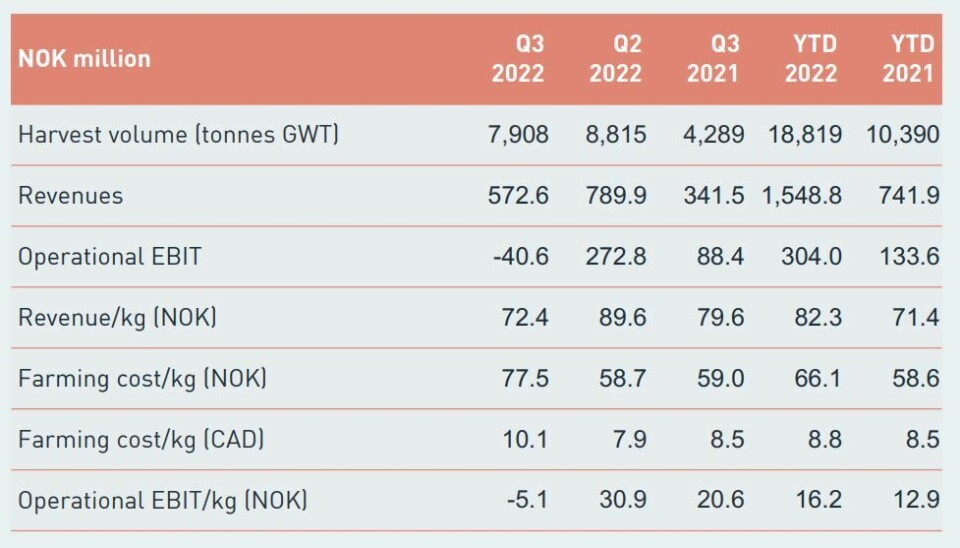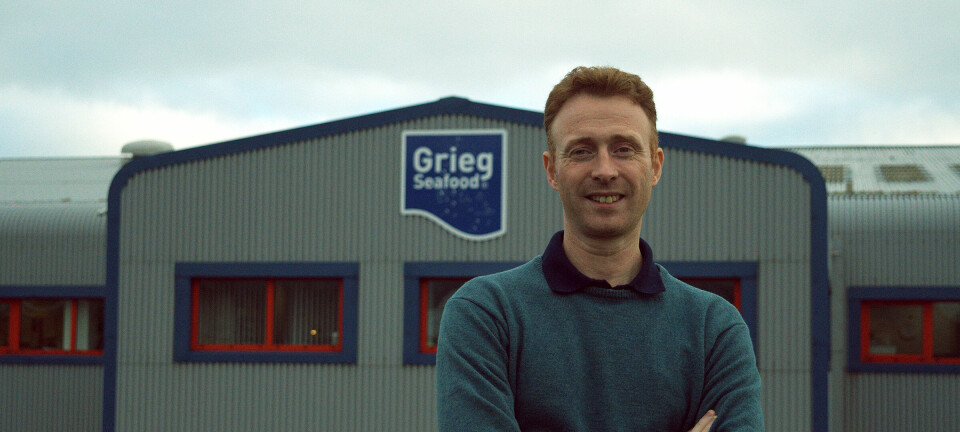
Triploid salmon project is going swimmingly for Grieg
First fish stocked in Newfoundland bay have high survival and growth so far
The first farmed salmon stocked in Placentia Bay, Newfoundland, are performing well and the operation is going according to plan, Norwegian salmon farmer Grieg Seafood has said.
Two million smolts have so far stocked in Placentia Bay, and currently have an average weight of 1 kg. This equates to a current biomass of 2,000 tonnes. First harvest is expected late 2023.
Grieg is the only company with permission to farm salmon in the bay and plans to eventually produce up to 45,000 tonnes of fish per year there. It has also been awarded rights to develop the Bays West aquaculture area west of Placentia, with a potential to produce an additional 20,000 tonnes of salmon.
Sterile fish
The company’s seawater licences in Newfoundland require use of sterile all-female salmon to eliminate the risk of genetic introgression with wild Atlantic salmon in case of escape.
Grieg is using triploid salmon, which have three sets of chromosomes instead of the normal two sets (diploid). This makes the fish sterile but has also been seen to make them more vulnerable to disease elsewhere, although this has not so far been the case for Grieg, which says it is basing operations on developed knowledge and experience about farming triploid salmon in both Norway and Scotland.
“The fish have good biological performance so far, with high seawater survival and growth, and we have not experienced any sea lice issues,” Grieg said in its third-quarter report. “We are still in an early phase and will expand the project gradually and in line with biological developments.”
RAS expansion
Grieg’s Placentia Bay sites are being supplied by a recirculating aquaculture system (RAS) hatchery, nursery and smolt unit in Marystown, NL. It has a capacity of 600 tonnes but will be expanded next year.
“We plan to construct an additional 1,400 tonnes of post smolt capacity in 2023, depending on a successful first winter in sea,” said Grieg in its report. “We have further options to expand, and we will gradually develop our operations to ensure biosecurity, fish health and profitability.”
The company has 13 seawater licences, each with an allowance of one million fish at first stocking, increasing to two million fish in subsequent stockings. Additional seawater licences are in application.
Algae setback in BC
In British Columbia, Q3 results were impacted by higher costs driven by reduced survival, and Grieg Seafood BC made an operating loss of NOK 5.1 per kilo on a harvest of 7,708 gutted weight tonnes. The lower survival in seawater was mainly due to algae blooms on sites where Grieg BC’s drop-down barriers and “CO2L flow” aeration system had not yet been implemented.

Production at remaining sites in BC was good. As part of the strategy to improve biological control, the company is in process of installing algae mitigation barrier systems at exposed sites in the region.
Grieg BC has also phased out older, smaller sites with challenging biology and high cost in the shíshálh Nation’s territory, located near the Sunshine Coast of BC.
The measure is expected to reduce the underlying cost in BC as farming cost on the sites has been approximately Can $1.3 higher per kilo compared to other farming areas due to the small size of the farms. The write down of licences and relevant seawater equipment of NOK 93 million, in addition to site clean-up costs estimated at NOK 20 m, were accounted for in Q3 results.
81,000 gwt in 2022
In Norway, results in Rogaland and Finnmark were positively impacted by a high share of superior fish, partly offset by contracts, timing of harvest in addition to lower average harvest weight in Finnmark. The cost level in Norway ended at NOK 49.8/kg, in line with guidance and up from NOK 42.7/kg in Q2 2022, primarily as a result of inflation. Production in the quarter was hampered by unfavourable biological conditions in both regions, which will impact full year 2022 harvest volumes. Production has gradually improved so far in Q4 2022.
Grieg expects to harvest 81,000 gutted weight tonnes of salmon in total in Norway and Canada in 2022, and 87,000 gwt next year.
























































